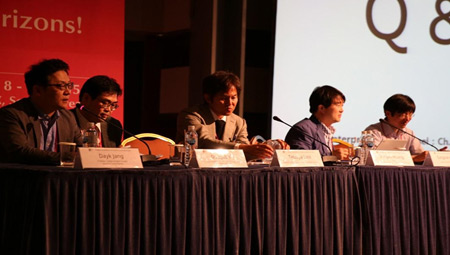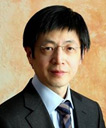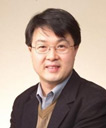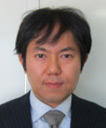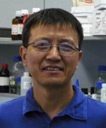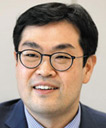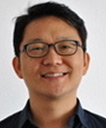| Title of announcement | IBS Center for Genome Editing host a session at the WCSJ | ||||||||||||||||
|---|---|---|---|---|---|---|---|---|---|---|---|---|---|---|---|---|---|
| Business forms | Academic Events | Expiration date for bidding | |||||||||||||||
| Department in charge | 전체관리자 | Registration Date | 2015-06-24 | Hits | 4531 | ||||||||||||
| att. | |||||||||||||||||
|
|
|||||||||||||||||
|
IBS Center for Genome Editing host a session at the WCSJ The Center hosted a discussion on CRISPR gene editing at the recent World Conference of Science Journalists in Seoul on Tuesday, June 9 in the COEX center. IBS Director and Professor Jin-Soo Kim produced the talk which featured three keynote speakers who discussed future benefits and issues surrounding this technology. Gene editing has the potential to eradicate malaria, create a robust, organic biofuel source, or even revive extinct creatures. It is being promoted as a way to eradicate genetic disorders in humans, even though one of the greatest fears in genome editing is its use in human embryos. But like any new technology, there lies a risk for unintended results. We would be remiss if we celebrated the polio vaccine without remembering tragedies such as the use of Thalidomide in pregnant women which led to severe birth defects. However, neither holds the potential to be as controversial, beneficial or as damaging as gene editing.
Professor Xingxu Huang is the first researcher to use CRISPR-Cas9 to create a genetic modified cynomolgus monkey. His team achieved this by a coinjection of Cas9 mRNA and sgRNAs into one-cell-stage cynomolgus embryos. The team’s work showed that this system enables simultaneous disruption of two target genes (Ppar-γ and Rag1) in one step, and no off-target mutagenesis was detected by comprehensive analysis. In the discussion, Professor Huang expressed overwhelming enthusiasm for the CRISPR editing process, saying “this technology is safer than previous methods. This is a really simple, powerful tool for doing this kind of work.” His findings indicated that using CRISPR was safer than his team predicted. With in vivo tests in monkeys, the team indicated 84 tentative off-target cleavage sites yet found none and had similar results in tests with mice, rats, pigs, and sheep. He extolled the virtues of CRISPR, saying that in the past he had to deal with expensive, time-consuming processes which resulted in many instances of off-target cleavage and now that he uses CRISPR the occurrence of off-target cleavage is rare. Professor Tetsuya Ishii presented a scenario in which a CRISPR was used for creating bioengineered food with naturally augmented nutritional value. “I surveyed a breeding program which used genome editing, and it was very impressive,” he said but still warned that “we need more background information on the safety of genome-edited plants as food sources.” He believes in a strict set of guidelines for plants with exogenous DNA (a result of ZFN process) but sees the value in relaxing regulations for organisms without it, which use CRISPR instead. In addition, Ishii described the three types of clinical applications for genome editing: While Professor Ishii agrees that the CRISPR gene editing is safe, he said, “I want to stress that a public dialog is very important.” He cautions that the ethical implications may not have been fully considered. He warns of three potential problems: the moral status of an edited human zygote, the dignity of offspring born of editing and the changes in the present and future society. He acknowledges that the ability to edit genomes is a new and exciting technology but wants to proceed with caution and in full awareness of what issues may arise which haven’t been anticipated.
Instead of only looking at the benefits that gene editing can bring, he spoke about caution and restraint for CRISPR. He asked, “was the Asilomar meeting a prudent approach to discuss technology and genetic engineering?” referencing the conference of the leading genetic researchers at Asilomar in California in 1975 where they addressed the biohazards presented by recombinant DNA technology and ultimately set voluntary guidelines for their own future research. Yi had the strongest voice of dissent among the speakers and warned of private interests and profits taking precedence over public safety when CRISPR is used on a large scale. He said, “There is a causal link between private ownership and the public interest forged by the promoters of biotechnology.” Yi was deliberate in pointing out that there is a large difference between rDNA and CRISPR technology and the approach for handling both shouldn’t be the same. He said, “We need to be more precise in assessing benefit and risk with CRISPR technology. It is quite different from conventional genetic engineering technology or even synthetic biology.”
During the question and answer portion of the discussion, a theme that was revisited several times by members of the audience was the concern for a new generation of bioterrorism or someone using CRISPR technology for their own, nefarious means. The members of the panel agreed that the risk was low and the cost for entry (in terms of financial as well as technical expertise) for this technology was too high for rogue actors to be a threat. The idea of “garage biology” was roundly dismissed by the members of the panel as well. This meeting of Asian CRISPR gene editing researchers is the first of its kind and illuminates the future of gene editing. Professor Yi stated that, “Gene editing is a globalized enterprise. Asia along with the USA and Europe has emerged as a powerful player in the production of this scientific knowledge. It is quite different from the 1970’s when only a few laboratories could perform recombinant DNA experiments.” While members expressed caution and some reservations on how this area of research should continue to grow, the overwhelming sentiment was that of optimism for the benefits that this technology will produce. by Daniel Kopperud Session Participants
|
|||||||||||||||||
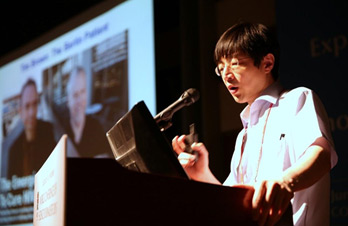 Professor Kim started the discussion with an overview for the mechanism of the CRISPR-Cas9 gene editing process. Professor Kim also gave practical examples of what he saw as a typical use for gene editing like a simple cure for hemophilia. Kim also described "knocking out" the myostatin gene in animals which would enable massive muscle growth and provide a greater meat source. Professor Kim displaced an image of a regular pig next to a muscular, genome edited pig. He referred to these pigs as ‘myostatin knockout pigs’ and stated they would be exempt from GMO regulations because no foreign genes are inserted in the pig’s DNA. The world’s most popular banana, the Cavendish, is under threat of extinction from a fungus. Professor Kim plans to tweak the genetic makeup of the Cavendish which will see it become immune and safeguard its survival. Unlike the Gros Michel in the 1950’s which suffered a similar threat, there is no ready substitute for the Cavendish. Kim plans to make some simple genetic tweaks to make the Cavendish immune to the fungus and insure its survival. He sees these as advances which will be realized in the near future, a thought which, only a few years ago, would have been relegated to the pages of science fiction. When asked what is next, Professor Kim simply stated, "In vivo, genome surgery," which would allow for precise genetic modifications in somatic cells. He envisions surgeons using molecular scissors, rather than traditional scissors, which, “Will cut DNA and modify the DNA sequence.”
Professor Kim started the discussion with an overview for the mechanism of the CRISPR-Cas9 gene editing process. Professor Kim also gave practical examples of what he saw as a typical use for gene editing like a simple cure for hemophilia. Kim also described "knocking out" the myostatin gene in animals which would enable massive muscle growth and provide a greater meat source. Professor Kim displaced an image of a regular pig next to a muscular, genome edited pig. He referred to these pigs as ‘myostatin knockout pigs’ and stated they would be exempt from GMO regulations because no foreign genes are inserted in the pig’s DNA. The world’s most popular banana, the Cavendish, is under threat of extinction from a fungus. Professor Kim plans to tweak the genetic makeup of the Cavendish which will see it become immune and safeguard its survival. Unlike the Gros Michel in the 1950’s which suffered a similar threat, there is no ready substitute for the Cavendish. Kim plans to make some simple genetic tweaks to make the Cavendish immune to the fungus and insure its survival. He sees these as advances which will be realized in the near future, a thought which, only a few years ago, would have been relegated to the pages of science fiction. When asked what is next, Professor Kim simply stated, "In vivo, genome surgery," which would allow for precise genetic modifications in somatic cells. He envisions surgeons using molecular scissors, rather than traditional scissors, which, “Will cut DNA and modify the DNA sequence.”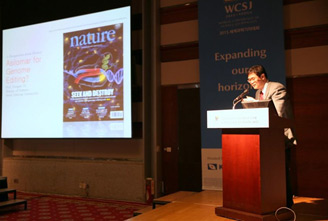 Dr. Doogab Yi looked at CRISPR through a historical and anthropological lens. His goal was to “highlight the need for a robust discussion about the ethical, legal and social implications of genetic engineering.” Since CRISPR is a more powerful and accurate tool than its predecessors, According to Yi, “One of the key challenges for harnessing genomic engineering for medical progress, for economic benefit would be how to formulate an international framework for legal and regulatory discussions.”
Dr. Doogab Yi looked at CRISPR through a historical and anthropological lens. His goal was to “highlight the need for a robust discussion about the ethical, legal and social implications of genetic engineering.” Since CRISPR is a more powerful and accurate tool than its predecessors, According to Yi, “One of the key challenges for harnessing genomic engineering for medical progress, for economic benefit would be how to formulate an international framework for legal and regulatory discussions.”